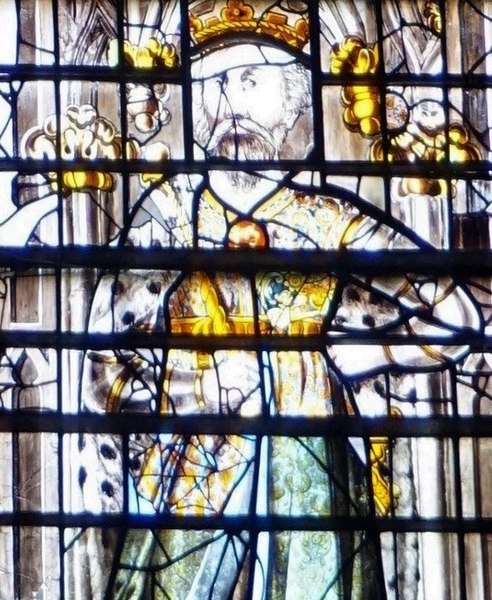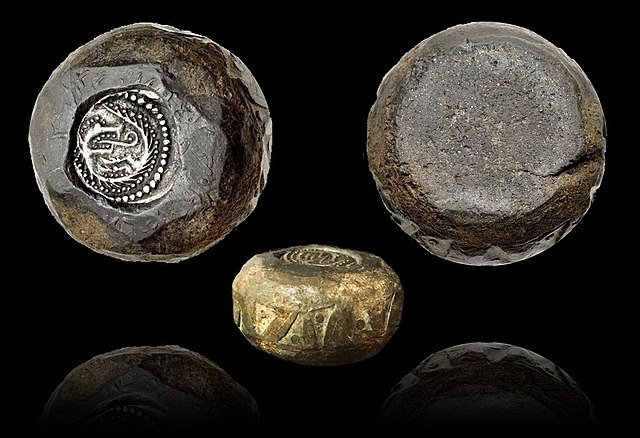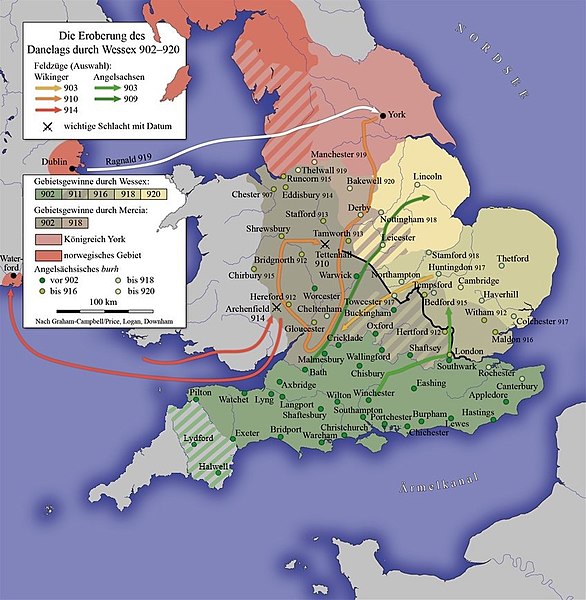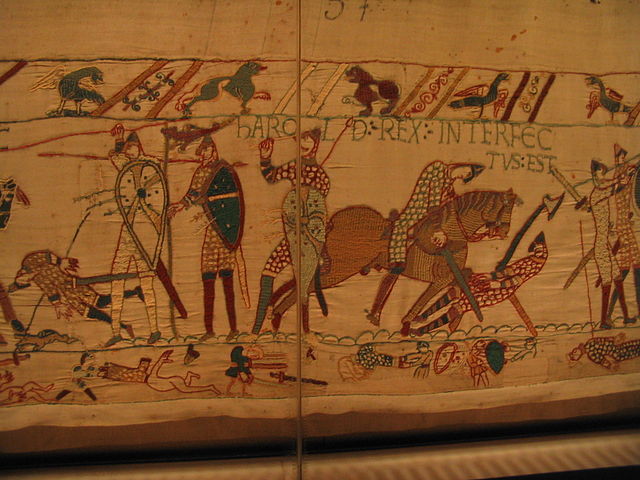Ine or Ini, was King of Wessex from 689 to 726. At Ine's accession, his kingdom dominated much of what is now southern England. However, he was unable to retain the territorial gains of his predecessor, Cædwalla, who had expanded West Saxon territory substantially. By the end of Ine's reign, the kingdoms of Kent, Sussex, and Essex were no longer under West Saxon sway; however, Ine maintained control of what is now Hampshire, and consolidated and extended Wessex's territory in the western peninsula.
King Ine depicted in the Transfiguration Window of Wells Cathedral.
King Ine's commemoration stone set in the floor of Wells Cathedral.
The Kingdom of the West Saxons, also known as the Kingdom of Wessex, was an Anglo-Saxon kingdom in the south of Great Britain, from around 519 until England was unified in 927.
Imaginary depiction of Cerdic from John Speed's 1611 "Saxon Heptarchy"
Anglo-Saxon–Viking coin weight, used for trading bullion and hacksilver. The material is lead and it weighs 36 g (1.3 oz). Embedded with an Anglo-Saxon sceat (Series K type 32a) dating to 720–750 and minted in Kent. It is edged in a dotted triangle pattern. Its origin is the Danelaw region and dates to 870–930
Unification of England and Defeat of the Danelaw in the 10th century under Wessex.
The Bayeux Tapestry, depicting the death of Harold II, 14 October 1066. His "Wyvern Standard" can be clearly seen at the left side.






